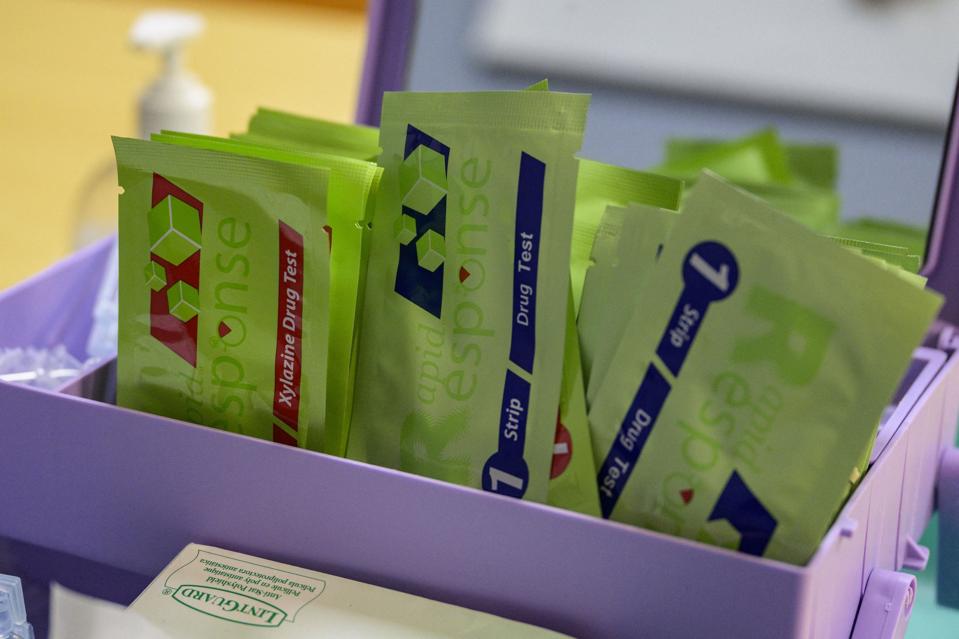An animal tranquilizer that can lead to amputation and even death has been detected in counterfeit medications in the U.K.
Scientists found “broad evidence” of the sedative, known as xylazine, in the country’s illicit drug market, according to a study published in the journal Addiction.
Researchers found the tranquilizer 35 times in human toxicology samples, drugs seized by police and substances sent to a postal drug testing service in Wales.
In 14 cases, the drug was found in counterfeit prescription medicines. In two, it was detected in cannibis vapes containing tetrahydrocannabinol (THC), which is illegal in the U.K.
These might seem like small numbers, but the researchers say in their paper shows the drug “has penetrated the U.K. illicit drug market.”
Senior study author Caroline Copeland said in a statement: “This is cause for alarm as a much wider population of people who use drugs beyond heroin users will be exposed to its harms.
“We also know that most people who buy heroin will not intend to buy xylazine and this combination increases the risk of overdose.”
A senior lecturer in pharmacology and toxicology at King’s College London, Copeland also directs the National Programme on Substance Use Mortality.
An ‘Emerging Threat’ in the U.S.
Xylazine has a longer history on the U.S. drug scene, where the researchers said it’s use has spread rapidly. The drug is sometimes mixed with fentanyl and sold as “tranq”– a concoction described almost exactly a year ago as an “emerging threat to the nation” by the White House.
The first person known to have died after taking xylazine outside of the U.S. was a man from the West Midlands region of England. Karl Warburton, aged 43, died in May 2022, per Sky News.
Last July, Copeland and other researchers described his death and others in Europe in a paper published in the Journal of Forensic and Legal Medicine.
Experts fear use of the sedative, sometimes nicknamed a “zombie” drug because it can put users into a stupor, is on the rise in Europe.
What Is Xylazine?
Xylanine is used by veterinarians to tranquilize animals, often in conjunction with ketamine. It is a synthetic non-opioid that slows down the passage of impulses from the brain to the central nervous system.
It is not indicated for use in humans and can cause breathing difficulties, slowed heart rate, dangerously low blood pressure and death, according to the Centers for Disease Control and Prevention.
The sedative can also restrict the flow of blood, sometimes leading to life-changing wounds, Copeland told the Addiction journal’s podcast Addiction Audio.
“It can cause blood vessels to contract, and our tissues need blood…..to survive, and if we’re closing off those blood vessels, that tissue is going to die and it’s going to turn into sores on your skin,” she said. “And if they get infected it can lead to amputation.”
Per the Guardian, co-author Adam Holland from the University of Bristol said the more harm reduction interventions were needed was needed to protect those who used drugs, “including drug checking and overdose prevention centres, to give them the opportunities they need to stay safe.”
A U.K. government spokesperson said in a statement that leaders were “aware of the threat” from xylazine and “determined to protect people” from it.
“We will not hesitate to act to keep the public safe,” the spokesperson said, adding that policymakers intended to put legal restrictions on the drug, “meaning anyone supplying this substance will face up to 14 years in prison, a fine or both.”

